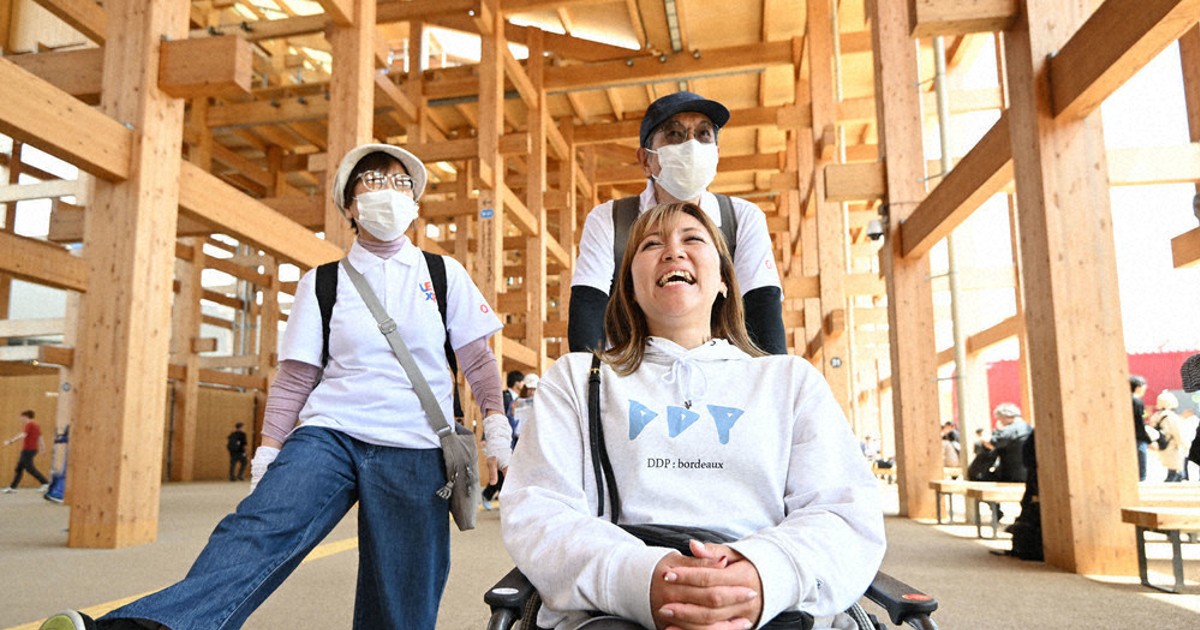Focus on EXPO: Wheelchair User Inclusion – A Call for Accessibility
The world of expos and large-scale events is rapidly evolving, with a growing emphasis on inclusivity and accessibility. This year, the focus is squarely on ensuring wheelchair users have a truly positive and enriching experience. No longer an afterthought, wheelchair user inclusion is becoming a critical benchmark for successful and responsible event planning. This article delves into the key aspects of creating a truly accessible EXPO experience for wheelchair users.
Beyond Ramps: A Holistic Approach to Accessibility
Accessibility goes far beyond simply providing ramps and wider doorways. True inclusion demands a multi-faceted approach, considering the needs of wheelchair users at every stage of the EXPO experience. This includes:
Physical Accessibility:
- Navigable Pathways: Wide, unobstructed pathways are crucial for easy maneuvering, particularly in high-traffic areas. Clear signage and well-maintained surfaces are essential.
- Accessible Restrooms: Sufficient, well-maintained, and spacious accessible restrooms strategically located throughout the EXPO venue are non-negotiable.
- Seating Options: Providing ample seating options, both in designated areas and throughout exhibition halls, allows for rest and respite.
- Lift Access: Multi-story venues necessitate reliable and readily available lift access for seamless navigation between levels.
- Service Animal Accommodations: Clear policies and designated areas should accommodate service animals accompanying wheelchair users.
Information Accessibility:
- Clear Signage: Large, clear, and easy-to-read signage, including Braille and tactile maps, is crucial for navigation.
- Accessible Information Materials: Printed materials should be available in accessible formats, including large print and Braille. Digital materials should adhere to WCAG (Web Content Accessibility Guidelines).
- Audio Description: Consider incorporating audio descriptions for visual displays and presentations.
- Real-time Communication: Provide clear and readily accessible communication channels for addressing any accessibility-related issues or requests.
Social Accessibility:
- Staff Training: Training staff on disability awareness and appropriate interaction with wheelchair users is vital for creating a welcoming atmosphere.
- Inclusive Design: Exhibits and displays should be designed to be accessible to all, including those using wheelchairs. Consider lower counters and interactive displays at accessible heights.
- Community Engagement: Involving organizations representing wheelchair users in the planning and execution of the event ensures a truly inclusive experience.
The Impact of Inclusive EXPOs
The benefits of prioritizing wheelchair user inclusion at EXPOs extend beyond simply complying with regulations. It fosters a positive brand image, attracts a wider audience, and creates a more welcoming and enjoyable experience for everyone. Companies exhibiting at accessible expos demonstrate a commitment to social responsibility and inclusive business practices. This in turn can increase customer loyalty and boost brand reputation.
Measuring Success: Feedback and Continuous Improvement
Gathering feedback from wheelchair users post-EXPO is vital to identifying areas for improvement and refining accessibility strategies for future events. Anonymous surveys, feedback forms, and direct engagement can provide valuable insights. Continuous improvement should be a cornerstone of any accessibility initiative.
Conclusion: Building a Truly Inclusive Future
Creating a truly inclusive EXPO experience for wheelchair users requires a proactive and comprehensive approach. By focusing on physical, informational, and social accessibility, event organizers can ensure a welcoming and positive experience for all attendees. The investment in accessibility is not just a cost; it's an investment in a more inclusive and equitable future for everyone. Let's strive for EXPOs that reflect the diversity of our world and celebrate the contributions of all participants.
